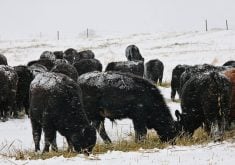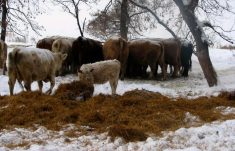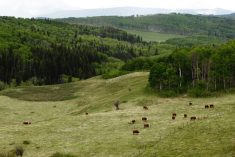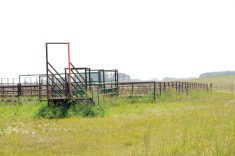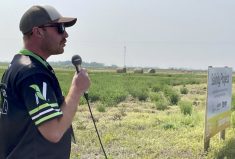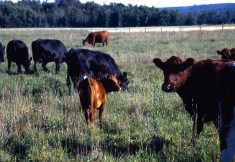Native rangelands are key assets to livestock producers — and rangeland health assessments allow them to adjust grazing practices to achieve productive, sustainable grazings.
A rangeland assessment system looks at the five key functions of rangelands: integrity and ecological status; community structure; hydrologic function and nutrient cycling; site stability, and noxious weeds.
And in all five areas, the adage ‘If you can’t measure it, you can’t manage it,’ rings true.
The first step is to break your rangeland into sites. In a grazing system, this would be your fenced fields. Sites may fall into one of four categories: lightly, moderately, heavily, or very heavily grazed. Rangelands are at their healthiest with light to moderate disturbance caused by grazing or fire.
Read Also

Tiny European moth a biocontrol for hardy oxeye daisy weed
A tiny moth from Europe has been found to be a great biological control agent against oxeye daisy, an invasive plant that is a threat to forage crops and pastures.
Lightly grazed sites are characterized by the presence of robust Rough fescue and Parry’s oatgrass, which indicates excellent integrity and ecological status. On a more heavily grazed site you may begin to see a lack of Rough fescue and find non-native species such as Kentucky bluegrass invading.
Like a forest, rangelands should also have layers of vegetation, which is called community structure. Tall-growing grasses (such as Rough fescue), mid-growing grasses (such as Idaho fescue and Parry’s oatgrass), and low-growing grasses all work together to create a thriving rangeland. A healthy, lightly to moderately disturbed rangeland should be lumpy looking due to the varying levels of grasses. However, a heavily disturbed area will appear more even throughout as the tall-growing grasses are diminished on these sites.
Hydrologic function and nutrient cycling can be evaluated by looking at the amount of litter covering the ground. Litter is important because it protects plants from extreme temperatures, prevents soil erosion, and provides nutrient cycling. Healthy loamy sites contain around 1,200 pounds of litter per acre. On a normal year, production can be reduced by as much as 40 to 60 per cent because there is not adequate litter on a site.
You can assess the amount of litter on your rangeland by selecting a 50×50-centimetre area and collect all of the litter in that area by hand. Compare the litter you have collected to the litter thresholds photo reference to determine the amount of litter on your site.
Site stability, the potential the site has to erode, is the fourth point to focus on when assessing rangeland health. Any obvious sign of erosion is a signal there is a serious problem that must be addressed.
Noxious weeds are the final piece to consider on your rangeland. Weeds such as Canada thistle are a sign of overgrazing on a site, that means productivity has been reduced.
What can you do if you have performed a basic rangeland health assessment and your findings weren’t exactly what you hoped for?
When formulating a long-term rangeland management plan, keep in mind the four basic principles of good management:
- Balance forage supply with livestock demand. This means knowing how many animal units your rangeland can support at a given time and not overstocking it.
- Distribute the grazing pressure across the landscape. Producers can situate water, shelter, and mineral away from each other to accomplish this. Animals must then utilize the entire pasture and in doing so will likely graze a larger area instead of continually gathering and grazing in a single area.
- Protect each area of the rangeland during its sensitive period. Rough fescue is particularly sensitive to early-season grazing, so don’t turn livestock out too early in the season.
- Allow forages to rest after grazing. Rotational grazing can play a key role in allowing an adequate rest period for your rangeland as well as aid in extending your grazing period.
Although these management practices may present initial challenges, the benefits of maintaining healthy rangelands are numerous. Benefits include lower feed costs, a renewable and reliable source of forage production, and stability of forage production during drought.
Healthy rangelands also give producers greater flexibility and efficiency for alternate grazing seasons (fall or winter); reduce maintenance costs for things such as weed control; do not require the input of inorganic fertilizers and other soil amendments or additives; and reduce the threat of noxious weeds.
For producers who see the long-term benefits of maintaining healthy rangelands, the rewards are certain to outweigh the extra management necessary.




